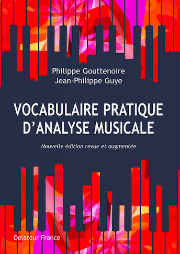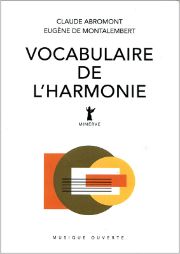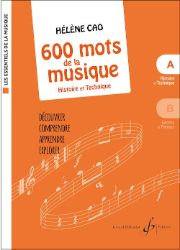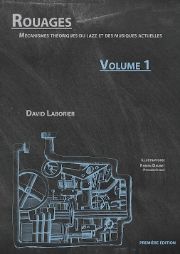Music theory terminology
Music theory was the subject of new publications.
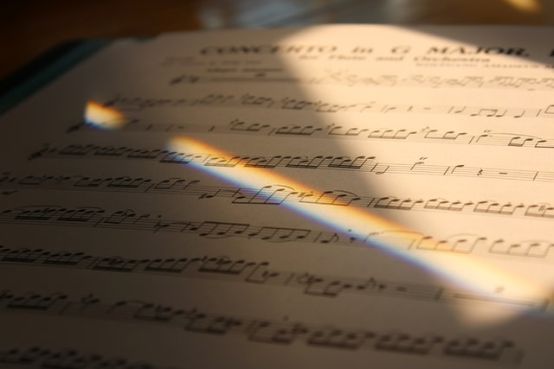
The vocabulary of music theory has recently given rise to three valuable contributions, dissimilar in their approach, each enhanced by short musical examples and, in the case of the first two, diagrams and tables.
The extensively revised and expanded edition of Practical vocabulary of music analysis by Philippe Gouttenoire and Jean-Philippe Guye offers a glossary of succinct, precise definitions. Linked by numerous internal cross-references, the 440 terms presented cover the fields of harmonic, melodic and rhythmic analysis, formal organization and various methods of analysis (including Schenker's, Schoenberg's and Forte and Lewin's set theory). Many other lexical fields are covered, including rhetoric, aesthetics and certain schools of contemporary music.
Conversely, the Vocabulary of harmony by Claude Abromont and Eugène de Montalembert sets out the material in a more encyclopedic way, grouping the concepts into 78 more extensive articles and paying close attention to the historical development, from Antiquity to the present day, of the themes dealt with. Where necessary, in order to broaden perspectives, various hypotheses and theories are explained, and several possible understandings of concepts are examined, sometimes with an opening towards non-Western music. While the book focuses on harmony, the authors also explore related subjects such as monody and the links between music and language.
In two volumes, one devoted to history (particularly its musical currents) and technique, the other to genres and forms (description and evolution), the 600 words of music by Hélène Cao include some 270 notes (some combining two or three words) summarizing, usually on one page, the essential knowledge of Western classical music, excluding organology. Accessible to amateurs and professionals alike, and enriched by numerous references to works ranging from the Middle Ages to spectral music, this two-volume set is written with clarity and pedagogy.
Also in two volumes, David Laborier's work presents the theory of jazz and the musical currents that have emerged from it, and contains a wealth of practical exercises, forming a complete course of interest to self-taught musicians and students, young and old alike. There are sections on ear training, rhythmic sense, basic music theory, harmony and an introduction to arranging techniques. History is not forgotten, as each of the 42 chapters is adorned with a drawing of one of the most important representatives of jazz, and web links allow you to read their biographies, listen to some of their most memorable recordings, and even transcribe some of them.
Philippe Gouttenoire, Jean-Philippe Guye: Vocabulaire pratique d'analyse musicale, new revised and expanded edition, 202 p., € 15.00, éditions Delatour France, Sampzon 2020, ISBN 9782752104151
Claude Abromont, Eugène de Montalembert: Nouveau vocabulaire de l'harmonie, 252 p., € 19.50, éditions Minerve, Paris 2021, ISBN 978-2-86931-165-7
Hélène Cao: Les essentiels de la musique - 600 mots de la musique, vol. A and B, boxed set, 324 p., € 34.90, reference: GB10083, éditions Billaudot, Paris 2021, ISBN 9790043100836
David Laborier: Rouages, mécanismes théoriques du jazz et des musiques actuelles, Vol. 1, WPP 2021-1, 358 p., et Vol. 2, WPP 2021-2, 472 p., € 50.00, Waltzing-Parke Publishing, Luxemburg 2021, ISMN 978-2-9199688-0-0 / ISMN 978-2-9199688-1-7






